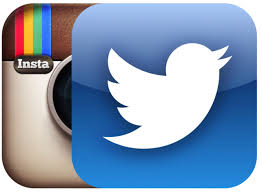
To make their apps more consistently interesting, especially for people who don’t check them non-stop, Instagram and Twitter are switching to a Facebook News Feed-esque ranking system.
Previously, if you wanted to let your followers know what was happening in your flower shop through Instagram and Twitter, you just needed to tweet or ‘gram’ it and your followers would see it as long as they opened their apps. Your posts were guaranteed an audience. A post to 100,000 followers reaches 100,000 feeds. In the new model, it won’t be so simple. Now posts will no longer appear in chronological order and instead be sorted “based on the likelihood you’ll be interested in the content, your relationship with the person posting, and the timeliness of the post.”
This change is being spun as a way to optimize a user’s feed when actually it grants Instagram and Twitter the power to control ad content. “On average, people miss about 70 percent of the posts in their Instagram feed,” says Kevin Systrom, the co-founder and CEO of Instagram. “What this is about is making sure that the 30 percent you see is the best 30 percent possible.” While this may be true, make no mistake, Instagram and Twitter will soon be a pay-to-play arena.
This similar approach has already happened on Facebook. Despite people subscribing to your company’s updates, most updates do not reach your fans organically. To reach more fans, Facebook ads and boosted posts are needed.
A similar set of consequences could be heading for Instagram and Twitter. A follow isn’t enough anymore. You’ll need to post high-quality content and receive a consistent stream of Likes from people for them to keep seeing all your content.
Now is the time for you to take a look at your performance on Instagram & Twitter over the last six to twelve months. Decide what worked and what didn’t; which tweets and photos gave you the most engagement and click-through rates. Algorithms reward high-performance users, since the more people who engage with an update, the more often that users updates will be promoted, thereby amplifying the effect of popularity.
